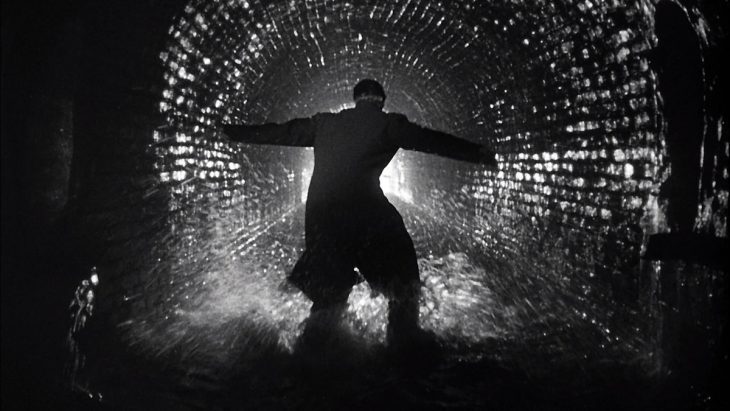
Too Many Villains: The Third Man (1949)
Carol Reed’s The Third Man (1949) is, on the one hand, a spy tale set in postwar Vienna, and, on the other, an exploration of American identity following World War II. This is surprising since the film was written and directed by Brits, though unsurprisingly, the chief British character comes out the best. More surprising still is that the film delivers on-location specifics that are so authentic you can still go on a Third Man tour if you visit Vienna with a concluding scene so archetypal filmmakers have been copying it ever since.
The film is set in bombed-out Vienna, a synecdoche for a war-torn and divided Europe. The city has been split between the Allied victors: the British, Americans, French, and Russians. The survivors get by, but Vienna’s glory days are past, and Robert Krasker’s black and white cinematography captures the city’s stark vibe with the chiaroscuro skill. It’s telling that the film’s thrilling conclusion is set in the city’s labyrinthine sewers.
Into this seen-better-days city comes Holly Martins (Joseph Cotton), a writer of dime-store Westerns who is so naïve and desperate that he has come to Vienna in search of a job on the recommendation of his old pal Harry Lime (Orson Welles). No sooner does Martins arrive than Lime gets killed. Convinced his friend died as a result of foul play, Martins sets out to find his killer. This puts him in the extended company of Lime’s girlfriend Anna (the magnificent Valli) and Lime’s nemesis, the British officer Major Callaway (Trevor Howard). The not-so-pleasant truth about Lime? He was a black market wheeler-dealer who left hospitals with diluted medicine in order to make a buck.
The Third Man gives us two versions of America. One is the hapless Holly, a tourist who has just enough conscience to feel bad after he’s bungled the job. The other is Harry Lime, who represents capitalism’s dark avatar. Even as Martins loses his naivete about Lime, he falls in love with Anna. Martins quickly gets friendzoned, and when he cooperates with Callaway to catch Lime, he loses Anna for good. The movie is so haunted by Orson Welles’s persona and character that it’s easy to mistake this film for one of Welles’s own. In his brief time on screen, he delivers this famous speech:
Welles makes the speech with gusto and with just a little bit of haste. The easily-persuaded Martins stands silently, unable to give a retort. The argument is an interesting microcosm of both Lime’s problems and Martins’ gullibility. Okay, so war generates progress in short space while peace encourages men to make dawdles. But is Lime Michaelangelo? Hardly. He’s a selfish profiteer who leaves nothing but mangled bodies in his wake. He volunteered to act as patron to Martins, who is evidently an artistic lightweight. This world war produces The Oklahoma Kid, not the Sistine Chapel. Meanwhile, Martins wants to negotiate a personal settlement that won’t cost him anything. He will sell Harry out for Anna’s sake without reckoning that his betrayal will completely poison Anna’s affection for him. Martins tries to find a middle ground between Italy and Switzerland, but the war has exposed everyone’s neutrality as a farce. No one is innocent.
The film’s final shot jars against what has been mostly urban mise-en-scene and encapsulates the film’s main themes. The camera holds a long shot of a long road stretching from the graveyard back to town. Bear trees line both sides, with their remaining leaves flittering across the screen. Martins waits for Anna and the woman Martins has fallen for. He smokes in the foreground, leaning against a car as Anna walks slowly toward the screen. Without even batting an eyelash, Anna walks past him and out of the scene. Martins is alone. He has taken the life of his friend. His love remains unrequited. He has missed has plane back to America. Martins discovers that it isn’t that the world doesn’t have any villains. It’s that it has too many.